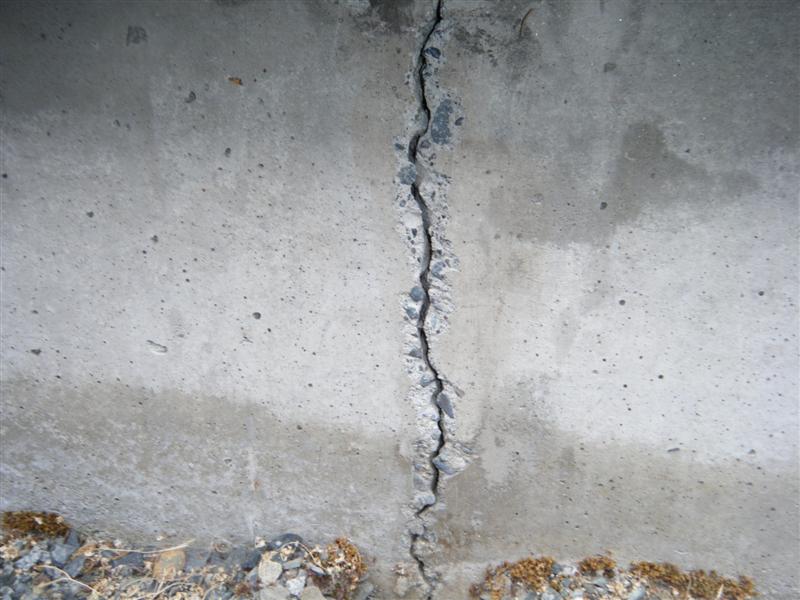Foundation Crack Concerns
Not all foundation cracks are equal!
That’s why home inspectors watch for signs of foundation wall cracking – to help identify the ones that are of concern. No homebuyer or homeowner wants to be surprised by an unplanned repair that can potentially add up to thousands of dollars.
There are three main types of cracks found in foundation walls:
1. Shrinkage Cracks – often of little or no concern
2. Settlement Cracks – potentially a cause for concern
3. Horizontal Cracks – possibly the sign of a major problem
Shrinkage Cracks are common in poured-concrete foundation walls. They are more or less vertical and most often found in the middle area of the wall. They occur because concrete shrinks as it cures.
Shrinkage cracks are not usually a concern unless:
- they are wider than 1/8 inch
- they increase in size over time
- they increase in width from bottom to top
- the crack continues into brick or masonry work above the foundation wall
If any of the above conditions are found, the crack is not simply a shrinkage crack – and may be of greater concern. Otherwise, minor cracks like this can be left if small and if they do not allow water to enter the home.
 Settlement Cracks can be vertical in nature – often near the ends of walls – or a diagonal ‘step’ crack up the mortar of concrete blocks and bricks. Unlike shrinkage cracks, settlement cracks often continue into brickwork above the foundation wall.
Settlement Cracks can be vertical in nature – often near the ends of walls – or a diagonal ‘step’ crack up the mortar of concrete blocks and bricks. Unlike shrinkage cracks, settlement cracks often continue into brickwork above the foundation wall.
Most settlement cracks are a one-time occurrence caused by the foundation settling, and tend not to change over time. However, homeowners should be concerned if the gap grows wider – in general or only at the top – or if the cracked edges no longer line-up horizontally – caused by the wall on one side of the crack sinking more than the other. These can be a sign of ongoing settlement as opposed to a one-time occurrence, and of footing problems. The footing is what the foundation wall sits on. Repairs that involve footings can be costly.
Horizontal Cracks in foundation walls may be of most concern. They are generally found in concrete block walls, and characterized by a gap on the inside of the mortar joint only.
A horizontal crack is a sign that pressure on the exterior side of the wall is causing it to bow inward and crack to accommodate its new curves. Sometimes this cracking is gradual and affects all of the mortar joints equally. Other times, the external pressure can affect one course of blocks more than another, causing it to protrude past the one below and above it.
Horizontal cracks in foundation walls should never be overlooked or trivialized. The external pressure that has cracked the wall is often associated with water drainage problems or excessive weight and can lead to major expense. These cracks tend to grow over time, as does the cost to repair the damage they cause.
Not Always Visible
One problem with detecting issues with foundation walls is that they are often covered – by interior walls on the inside and the ground on the outside. This means that cracks cannot always be detected simply by sight.
Tips:
- Signs of repeated crack repair or patching attempts can be a sign of an ongoing, growing problem.
- Considering a basement renovation? Be certain foundation walls are sound before covering them up. It’s one thing to have to repair a foundation wall. It is quite another to have to remove and rebuild an interior wall or repair the damage of a flood or mold in addition to repairing a foundation wall.
- Thinking of buying a home with a newly renovated basement? Ask to see any before and after pictures or shots taken during the reno, and try to spot any problem they may have been trying to cover-up.
- Even a very minor crack can leak water into your basement if water is allowed to pool on the outside of the wall. Always ensure the ground around your home is sloped to prevent water from collecting next to the foundation, and that downspouts take rainwater well away from the foundation.
Courtesy of Joe Roberto – Lighthouse Inspections
